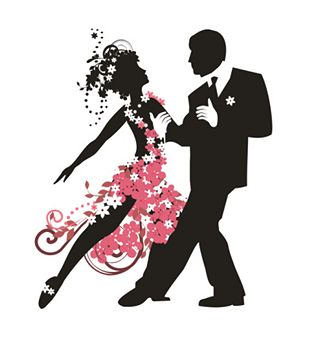Cha Cha Dancing Latin Style
Cha cha Dancing is one of the five international ballroom dances of the Latin American program, for dance competitions.
The modern style of dancing the cha cha cha came from the studies made by dance teacher Monsieur Pierre (Pierre Zurcher-Margolle), who partnered Doris Lavelle.
Pierre, who at that time resided in London, visited Cuba in 1952. His aim then was to find out how and what Cubans were dancing at the time.
The basis of the modern cha cha dance was laid down in the 1950s by Pierre & Lavelle and developed in the 1960s by Walter Laird, with other top competitors of the time.
The steps taught to pupils today are based on these accounts.
Cha Cha Cha Vocal Imitation
It has often been suggested that the name Cha Cha is the vocal imitation of the sound of the feet doing the chasse, which is included in many of the steps.
This could account for it being called the Cha Cha Cha by some people and others just call it the Cha Cha. As it is danced, with the accent on the one beat.
The tempo is fast, lively and staccato.
Free Cha Cha Movement
As with most Latin dances, the feet remain close to the floor, toe steps.
The dancers hips are allowed to relax, this gives free movement in the pelvic area.
With the bending and straightening of the knees, as the steps are taken the upper body shifts over the supporting foot.
As the foot moves, the body follows.
Cuban Origin
Steps are kept compact and the dance, is generally danced without any rise and fall.
Although the modern ballroom technique of Cha cha as with other ballroom dances, particularly in competition dancing has given rise, to a gradual evolution in the movements.
In essence it is still firmly based on its, Cuban origin of the 1950s.
The primary difference in Cha Cha dancing is the addition of a triple step that replaces the slow step in Mambo-Rumba.
This hip action is called Latin or Cuban motion
Updated Cha Cha variations for now
Cha-cha-chá is danced to authentic Cuban music, although in ballroom competitions it is often danced to Latin
Pop or Latin Rock. The music for the international ballroom cha-cha-chá is energetic and with a steady beat.
The music may involve complex polyrhythms.
In general, steps are kept compact and the dance is danced generally without any rise and fall; this is the modern ballroom technique of Cha-cha
Cuban music is very rich and is the most commonly known expression of culture ~anon~
Cuban Motion



